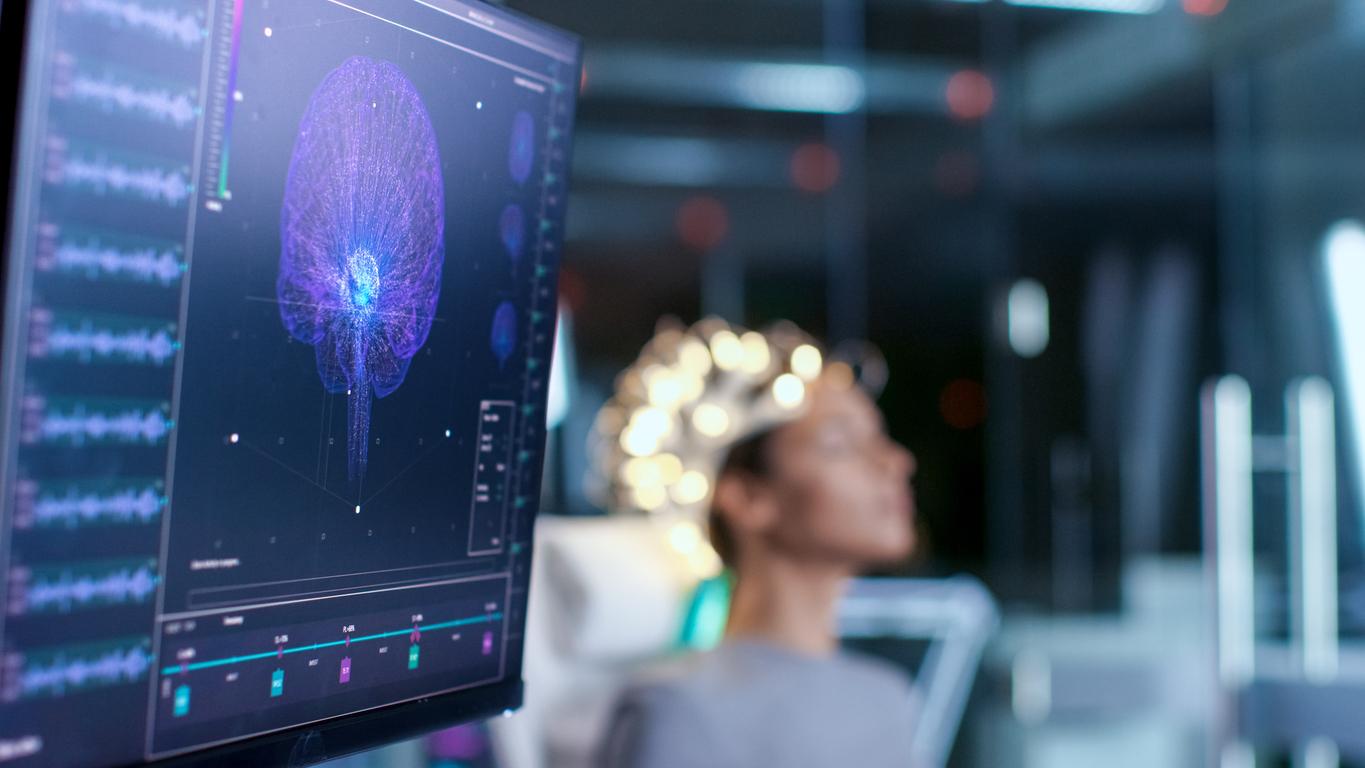A century after the first recordings of the electrical activity of the human brain, experts take stock of the announced progress in electroencephalography.

- One hundred years after the first electroencephalography (EEG), researchers asked more than 500 experts from around the world to reflect on the impact of this technology and the future challenges it could address.
- They estimate that real-time and reliable diagnosis of brain abnormalities, such as seizures or tumors, should be achieved within 10 to 14 years. EEG technology could also be used in video games and virtual reality in the near future, around 20 years.
- The possibility of being able to read the content of dreams and long-term memories could also become a reality, but not for at least 50 years, according to the most optimistic.
The electrical activity of the human brain was first recorded in July 1924 by the German psychiatrist Hans Berger: as part of a clinical diagnosis, the analysis of electroencephalography (EEG) had allowed epilepsy to be reclassified as a disorder of brain activity and not of personality. Since then, EEG, a non-invasive and affordable method, has been commonly used to study brain functions and dysfunctions.
One hundred years after this groundbreaking discovery, researchers from the University of Leeds in the UK asked more than 500 experts from around the world to consider the impact of this technology and the future challenges it could address. Their responses were published in the journal Nature Human Behavior.
Real-time diagnosis of brain abnormalities within a decade
According to experts, advances in EEG will pave the way for a whole series of scientific innovations: improving cognitive performance, early detection of learning disorders, increasing the reliability of lie detectors or serving as a communication tool for patients suffering from severe motor disorders. And this will be all the easier since “Each of us could carry our own personal, portable EEG […] like a smartphone”they predict in a press release. “This technology has the potential to transform our daily activities and the way we diagnose and treat neurological conditions in the future.”
When asked about the time frame – how long before these innovations see the light of day? – experts estimate that real-time and reliable diagnosis of brain abnormalities, such as seizures or tumors, should be achieved within 10 to 14 years. EEG technology could also be used in video games and virtual reality in the near future, around 20 years. The possibility of being able to read the content of dreams and long-term memories could also become a reality, but not for at least 50 years, according to the most optimistic.
Electroencephalography combined with AI and virtual reality?
“I believe that EEG, when combined with technologies such as artificial intelligence (AI) and virtual reality, could radically transform the way we interact with machines and, in doing so, play an extremely important role in science and society over the next hundred years.”adds Professor Faisal Mushtaq, lead author of the study.
“But to do this, the neuroscience community – from academia, clinical practice and industry – must commit to promoting ethical, inclusive and sustainable practices that will help EEG achieve its enormous potential.”















